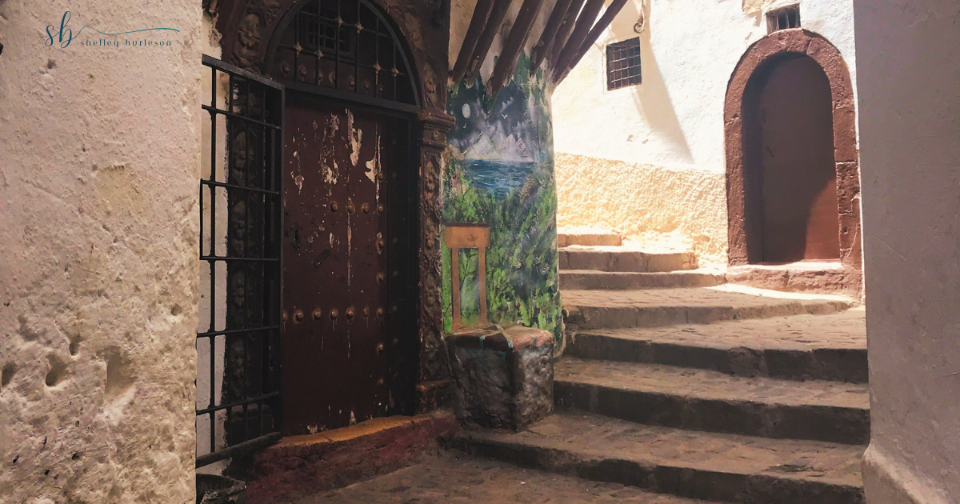This post may contain Amazon affiliate links which means, as an Amazon Associate, I may receive a small commission from purchases made through these links at no cost to you. I only recommend products I have personally used. To learn more, please see my privacy policy page.
The Casbah of Algiers, a maze of narrow streets and historic buildings, stands as a symbol of Algeria’s multifaceted history. This ancient citadel, located on the Mediterranean coast, showcases architectural styles from various eras, reflecting the diverse cultures that have influenced the region.
Key Words
Uncover the secrets of the Casbah, from its inception as a small Phoenician trading post to its pivotal role in Algeria’s struggle for independence. Join me as we navigate its alleys, uncovering stories of conquest, resilience, and cultural fusion. Read on…
Key Takeaways
- History: The Casbah of Algiers is a historical citadel with roots stretching back to the Phoenician era, through Roman rule, Islamic influence, Ottoman dominion, and French colonialism, culminating in a pivotal role in Algeria’s fight for independence.
- Architectural Marvel: A stunning blend of Moorish and Ottoman architecture characterizes the Casbah, featuring significant buildings like mosques, palaces, and traditional houses, alongside the unique urban structure of its narrow, winding streets.
- Cultural Geography: The Casbah serves as a melting pot of cultures, reflecting centuries of diverse influences. Traditional crafts, vibrant marketplaces, and social practices continue to thrive, underscoring the area’s cultural heritage.
- Preservation Challenges: Despite its designation as a UNESCO World Heritage site, the Casbah faces ongoing conservation issues. Efforts to balance modernization pressures with the need to preserve its architectural and historical integrity are critical for its future.
- Legacy and Influence: The Casbah’s impact extends beyond its physical boundaries, influencing literature, film, and popular culture globally. Its legacy as a symbol of resistance, resilience, and Algerian identity continues to inspire and resonate worldwide.

Introduction to the Casbah
Nestled in the heart of Algiers, the Casbah is not just an ancient citadel but a living testament to Algerian history. Known as the “kasbah,” which translates to “fortress” in Arabic, this historic quarter tells the story of a land shaped by multiple civilizations. Situated on the Mediterranean coast, its strategic location underscores not only its geographical significance but also its role in the socio-economic development of the region. As a designated UNESCO World Heritage site, the Casbah stands as a guardian of Algerian heritage, offering a glimpse into the architectural genius and cultural geography of the Mediterranean and Islamic worlds.
Why the Casbah is a UNESCO World Heritage Treasure
The recognition of the Casbah as a UNESCO World Heritage site underscores its universal value as a cultural landmark. This prestigious designation highlights the area’s exceptional architecture, characterized by narrow winding streets, traditional, white-washed houses, and vibrant markets that have survived centuries of change. The Casbah’s status as a World Heritage site not only celebrates its historical and cultural importance but also emphasizes the need for its preservation for future generations to appreciate and learn from its storied past.
In exploring the Casbah, visitors and scholars alike are invited to travel the corridors of time, where each stone and alleyway reveals tales of conquests, resilience, and the enduring spirit of the Algerian people. Its inclusion in the UNESCO heritage list not only brings global attention to its historical significance but also reinforces the Casbah’s role in the collective memory and identity of Algeria.
Exploring the Casbah: A Journey Through Time
The Casbah of Algiers offers more than just a glimpse into Algeria’s past; it serves as a bridge connecting the ancient to the modern, inviting all who wander its alleys to uncover the layers of history etched into the physical place. The Casbah promises an unparalleled exploration of Algeria’s heart and history.

The Casbah: A Timeline of Transformation
The Dawn of Civilization: Phoenician Roots to Roman Dominion
The modern Casbah’s story begins with its establishment as a Phoenician trading post, a testament to its importance in Mediterranean commerce. This early settlement laid the foundation for what would become a point of cultural and economic exchange. As the Romans took control, they furthered the area’s development, integrating it into the vast Roman Empire. This period marked the beginning of architectural and urban transformations that would shape the Casbah’s historical landscape.
Islamic and Ottoman Eras: A Cultural Renaissance
With the advent of Islamic rule, the Casbah entered a new era of cultural and architectural flourish. The introduction of Islamic influences enriched the region’s heritage, weaving a complex mosaic of art, science, and philosophy that would define the area for centuries. The Ottoman Empire’s reign further cemented the Casbah’s role as a cultural hub, introducing distinctive architectural styles and administrative reforms that left a lasting imprint on the city’s identity.
French Colonial Impact: Architectural Evolution and Social Change
The French colonial period marked a significant epoch in the Casbah’s history, characterized by profound architectural transformation and socio-political upheaval. French colonialism introduced European architectural styles, significantly altering the cityscape, and embedding new cultural dimensions within the traditional Islamic fabric of the Casbah. This era was a time of contrast and confrontation, as colonial policies and practices often clashed with local traditions and values.
The Heartbeat of Revolution: The Casbah during the Algerian War of Independence
Perhaps the most defining moment in the Casbah’s history was its central role in the Algerian War of Independence. As the stronghold of resistance movements, the Casbah was the backdrop to pivotal events that shaped Algeria’s fight for freedom. The narrow, winding alleys of the Casbah became a symbol of resilience and defiance, embodying the indomitable spirit of the Algerian people in their quest for sovereignty and self-determination.
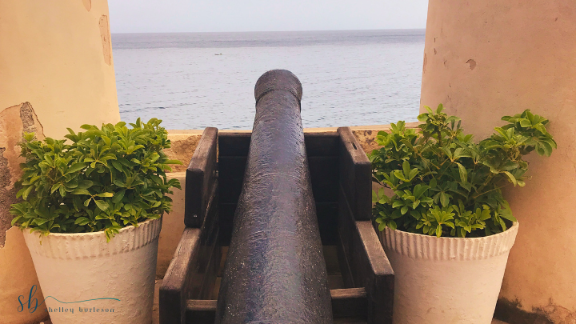
The Casbah: Geographical Splendor and Strategic Might
Embraced by Nature: The Topography of the Casbah
Perched atop a hill overlooking the azure waters of the Mediterranean, the Casbah of Algiers is a marvel of natural and human-made beauty. Its unique topography, characterized by steep slopes and rugged terrain, has shaped the development and fortification of this historic citadel over the centuries. The elevation provides not just stunning views but has also been a natural defense mechanism, protecting the heart of Algiers from numerous invasions.
A Maze of History: Urban Structure and Narrow Streets
The complicated urban layout of the Casbah, with its maze of narrow streets, blind alleys, and bustling squares, tells the story of a city that has grown organically over millennia. This complex network of passageways reflects the traditional Islamic urban design, fostering a sense of community and solidarity among its inhabitants. The narrow streets, a hallmark of the Casbah’s architecture, have facilitated both the daily lives of residents and the movements of resistance fighters during critical periods of history.
Strategic Gateway: Mediterranean Trade and Defense
Strategically located on the Mediterranean coast, the Casbah has served as a vital gateway for trade, culture, and military campaigns throughout history. This prime location made it a coveted prize for conquerors and a center of Mediterranean trade, influencing the economic and political landscapes of the region. The Casbah’s port, once teeming with merchants from across the world, highlights its role as a hub of commerce and interaction among diverse cultures. Moreover, its strategic significance extended to defense, with its fortifications and watchtowers serving as key assets in protecting the city and controlling naval routes.
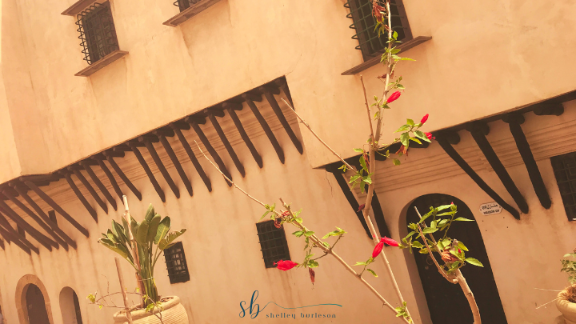
Architecture of the Casbah: Styles and Heritage
Moorish and Ottoman Elegance
The Casbah of Algiers is a testament to architectural grandeur, where the beauty of Moorish designs meets the majestic precision of Ottoman architecture. This blend creates a unique visual and cultural landscape, reflecting the influences that have shaped Algiers over centuries. The use of detailed tile work, ornate calligraphy, and flowing water features in courtyards exemplifies the Moorish influence, while the robust fortifications and grandiose palaces bear witness to Ottoman architectural prowess. This harmonious fusion not only defines the Casbah’s skyline but also symbolizes the cultural convergence that is at the heart of Algerian identity.
Icons of History: Mosques, Palaces, and Traditional Houses
The architectural landscape of the Casbah is punctuated by significant buildings that tell stories of faith, power, and everyday life. Mosques, with their soaring minarets and serene prayer halls, serve as spiritual beacons, while palaces like Dar Aziza and the Dey’s Palace showcase the opulence and sophistication of Ottoman administrative and residential architecture. Traditional houses, often hidden behind unassuming façades, open into lush courtyards, offering a view into the private lives of the Casbah’s residents. These structures not only highlight architectural diversity but also the social hierarchies and communal living practices of their time.
The Challenge of Preservation: Restoration and Conservation Efforts
Preserving the Casbah’s architectural heritage is a monumental task, faced with challenges ranging from urban decay to modernization pressures. The details that adorn many of its historic buildings are susceptible to the ravages of time and neglect, prompting urgent restoration and conservation efforts. Initiatives led by local authorities and international organizations, including UNESCO, aim to safeguard this architectural treasure for future generations. These efforts involve meticulous restoration work, community engagement, and policy formulation to balance the Casbah’s historical significance with the needs of its living, breathing community.
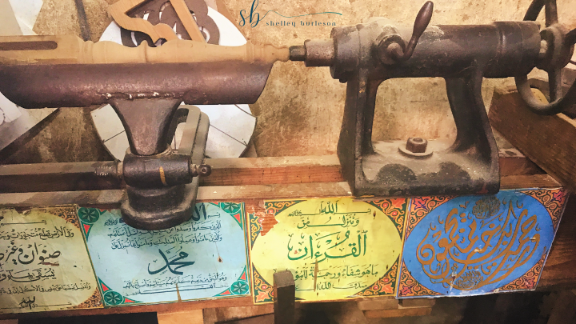
The Heartbeat of Algiers: Culture and Society
A Melting Pot of Cultures
The Casbah stands as a living testament to the cultural diversity that has defined Algiers for centuries. This historic citadel, with its narrow alleys and bustling courtyards, has been a meeting point for civilizations from the Mediterranean basin and beyond. The intermingling of Berber, Arab, Ottoman, and French influences has created an amazing cultural mosaic, manifest in the everyday life, customs, and traditions of its inhabitants. The Casbah’s ability to embrace and blend these diverse cultural elements has contributed to its unique identity, making it a symbol of coexistence and cultural identity.
Preserving Tradition: Crafts and Practices
Within the walls of the Casbah, traditional crafts and practices continue to thrive, passed down through generations as a living heritage. Artisans in their workshops produce exquisite jewelry, pottery, and textiles, employing techniques that have remained unchanged for centuries. These crafts are not only a means of livelihood but also a way to preserve and celebrate the Casbah’s cultural heritage. The commitment of these artisans to their craft underscores the importance of tradition in sustaining the social fabric of the Casbah.
Marketplaces: The Pulse of the Community
The bustling marketplaces of the Casbah are a focal point of community life, offering a sensory overload of sights, sounds, and smells. These markets are not just places of commerce but also social hubs where news is exchanged, and relationships are forged. They reflect the dynamic nature of the Casbah, adapting to the needs of contemporary Algiers while retaining their traditional character. The markets serve as a bridge between past and present, showcasing the adaptability of the Casbah’s community.
From Cultural Harmony to a Quest for Independence
The enduring social practices of the Casbah have not only shaped its identity but have also played a crucial role in its history, especially during the Algerian War of Independence. The same streets that witnessed the harmonious blend of cultures also became the stage for a determined and bloody struggle for freedom. As we investigate the Casbah’s vital role in the fight for independence, we see how its cultural and social foundations contributed to a spirit that yearned for self-determination. This next section explores how the Casbah, rooted in diversity and tradition, became a fortress of resistance, echoing the collective calls of its people for liberation.

The Casbah's Role for Independence
The Epicenter of a Nation's Struggle
During the Algerian War of Independence, the Casbah of Algiers was more than just the heart of the capital; it was the nerve center of the resistance movement. This historic quarter, with its narrow streets and dense housing, became the stronghold for the National Liberation Front (FLN), the driving force behind Algeria’s quest for independence. The Casbah’s complicated layout provided the perfect backdrop for guerrilla tactics and clandestine operations, making it a formidable challenge for French forces.
The FLN's Strategic Mastermind
The FLN used the Casbah not only as a hideout but as a strategic base for planning and executing operations across Algiers and beyond. This section of the city, teeming with nationalistic fervor, became a symbol of defiance and the fight for self-determination. The FLN’s operations, which ranged from strikes to sabotage, underscored the Casbah’s role in the independence movement, mobilizing support and drawing international attention to their cause.
The Battle of Algiers: A Turning Point
The Battle of Algiers was a key episode in the war, marked by intense urban warfare that showcased the FLN’s tactics against the French military’s attempts to regain control. This period saw the Casbah as a battlefield, where the struggle for Algerian independence was fought house by house, street by street. The impact on the local population was profound, with civilians caught in the crossfire, facing curfews, blockades, and the harsh realities of war.
French Military Response and the Cost of War
In response to the FLN’s activities, the French military deployed paratroopers, established blockades, and resorted to controversial, and often brutal, tactics, including the use of torture, to gather intelligence and dismantle the resistance network. These measures, aimed at suppressing the uprising, only fueled the determination of the Algerian people and drew widespread condemnation from the international community.
Global Spotlight on the Casbah
The role of media and international reactions played a critical part in shaping the narrative of the Algerian struggle for independence. Reporting and images of the Casbah’s plight highlighted the human cost of the conflict, garnering sympathy and support for the Algerian cause globally. This external pressure, combined with the determination of the Algerian people, contributed to a shift in the tide of the war.
Aftermath and the Birth of a Nation
The aftermath of the Algerian War of Independence saw the Casbah emerge not just as a survivor of conflict but as a symbol of Algerian identity and resistance. The war’s significance in shaping modern Algeria cannot be overstated, with the Casbah’s role in this historical moment forever etched in the national consciousness. Today, the Casbah stands as a testament to the struggle for freedom and the price paid for independence.
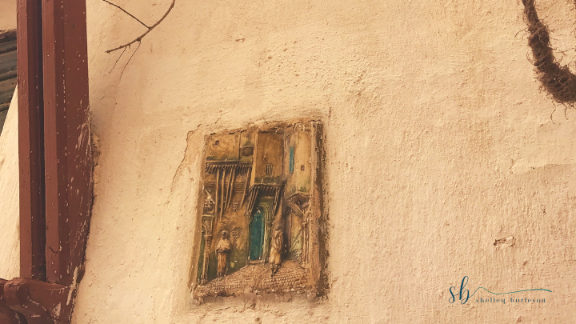
The Casbah: Literature and Film
The aftermath of the Algerian War of Independence illuminated the Casbah not just as a historical landmark but as a profound source of inspiration in Algerian and international art. This historic citadel, with its tales of struggle, resistance, and liberation, has captivated the imagination of artists, writers, and filmmakers, making it a recurring motif in literature and film. Its representation extends beyond geographical boundaries, symbolizing universal themes of freedom and the human spirit.
The Casbah Through the Lens of Creativity
In literature, the Casbah has been depicted as a character in its own right, its narrow alleys and hustle and bustle serving as the backdrop for stories of love, conflict, and identity. Algerian authors have woven stories of the Casbah’s history into their narratives, portraying it as both a sanctuary and a battleground. Internationally, the allure of the Casbah has also been explored, offering diverse perspectives on its complexity and beauty.
In film, the Casbah has taken center stage in both Algerian cinema and Hollywood productions. Its depiction ranges from the historically poignant to the romantically exotic, showcasing the Casbah’s multifaceted identity. Films such as “The Battle of Algiers” (1966) offer a gritty, neorealistic portrayal of the Casbah’s role in the independence movement, influencing filmmakers and audiences worldwide with its powerful storytelling and authenticity.
A Symbol Resonating Beyond Borders
The Casbah’s influence on and depiction in popular culture underscore its appeal and significance. As a symbol of Algeria’s cultural heritage and tumultuous history, it continues to inspire artistic exploration and interpretation. Through literature and film, the Casbah transcends its physical boundaries, engaging with global audiences and inviting them to discover the depth of its stories.
Bridging History with Cultural Legacy
As we transition from the Casbah’s role in the Algerian War of Independence to its representation in arts and media, it’s clear that its impact extends far beyond the historical and geographical. The Casbah continues to serve as a bridge between past and present, its narratives of resistance and freedom resonating in contemporary cultural expressions. This enduring legacy not only celebrates the Casbah’s historical significance but also its ongoing influence in shaping Algerian and global cultural landscapes.
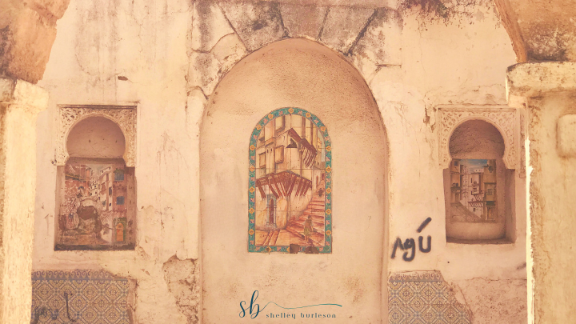
The Casbah: Navigating the Present and Envisioning the Future
Conservation at the Heart of the Casbah
The Casbah of Algiers, a jewel of historical and cultural significance, faces ongoing conservation challenges that threaten its legacy. As a UNESCO World Heritage site, the Casbah is recognized for its universal value, yet the ravages of time, urbanization, and neglect pose severe risks to its architectural integrity and heritage. UNESCO initiatives, alongside local efforts, are pivotal in addressing these concerns, focusing on restoration projects, awareness campaigns, and sustainable conservation practices. These initiatives aim to preserve the Casbah’s unique character for future generations, ensuring that its stories and beauty are not lost to decay.
The Modern Era: A Delicate Balance
In the modern era, the Casbah finds itself at a crossroads, navigating the dynamics of tourism and preservation. There is an increasing need to manage visitor access and infrastructure development sensitively. Balancing the economic benefits with the imperative to preserve the Casbah’s cultural and historical essence is a challenge that requires innovative solutions. Strategies such as regulated tourism, community involvement, and the promotion of responsible travel practices are key to ensuring that the Casbah can be enjoyed by visitors while maintaining its integrity and significance.
The Path Forward: Embracing Challenges as Opportunities
The future of the Casbah hinge on a collective commitment to its preservation and a strategic approach to its challenges. Embracing these challenges as opportunities to innovate and engage with both local communities and the international community can pave the way for a sustainable future. The Casbah’s ability to adapt and thrive in the modern era, while honoring its rich past, will determine its continued relevance and resilience as a cultural and historical landmark. The collaboration between preservation efforts and thoughtful tourism development holds the key to ensuring that the Casbah remains a vibrant testament to Algerian heritage and a beacon of cultural pride on the global stage.
Wrap Up...
As we conclude our exploration of the Casbah of Algiers, it’s clear that this historic citadel is more than just a collection of buildings; it is the living heart of Algeria. Through its winding alleys and vibrant marketplaces, the Casbah tells a story of cultural diversity and the unyielding spirit of a people fighting for their identity. The challenges of conservation and preservation underscore the importance of safeguarding this treasure for future generations. The efforts of UNESCO, local authorities, and the community highlight a collective commitment to preserving the Casbah’s legacy. As the Casbah continues to stand against the test of time, it remains a symbol of Algerian pride and a beacon of cultural heritage on the global stage. Let us carry forward the story of the Casbah, ensuring that its tales of struggle, triumph, and beauty continue to inspire and resonate across the world.

